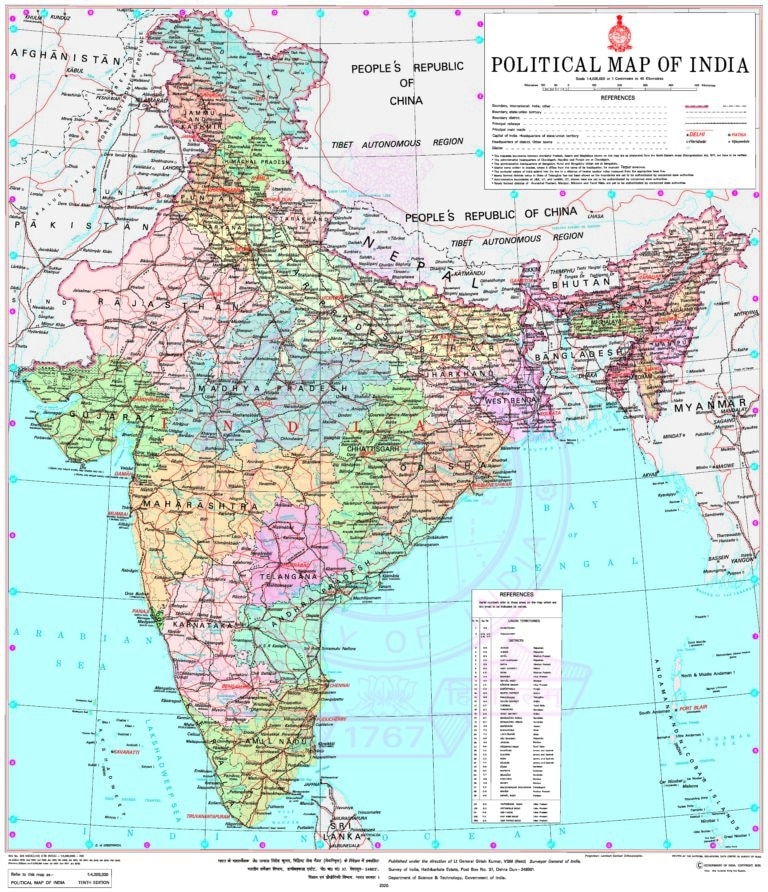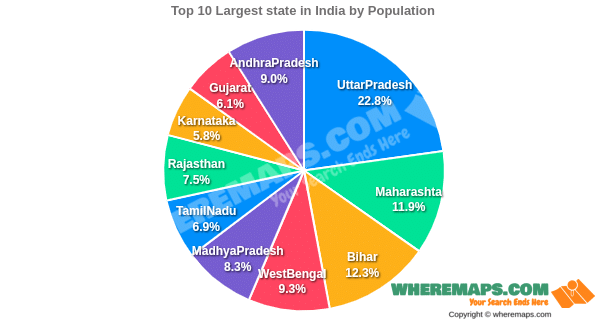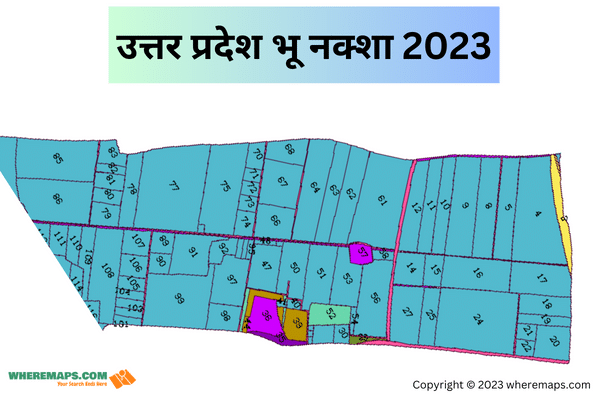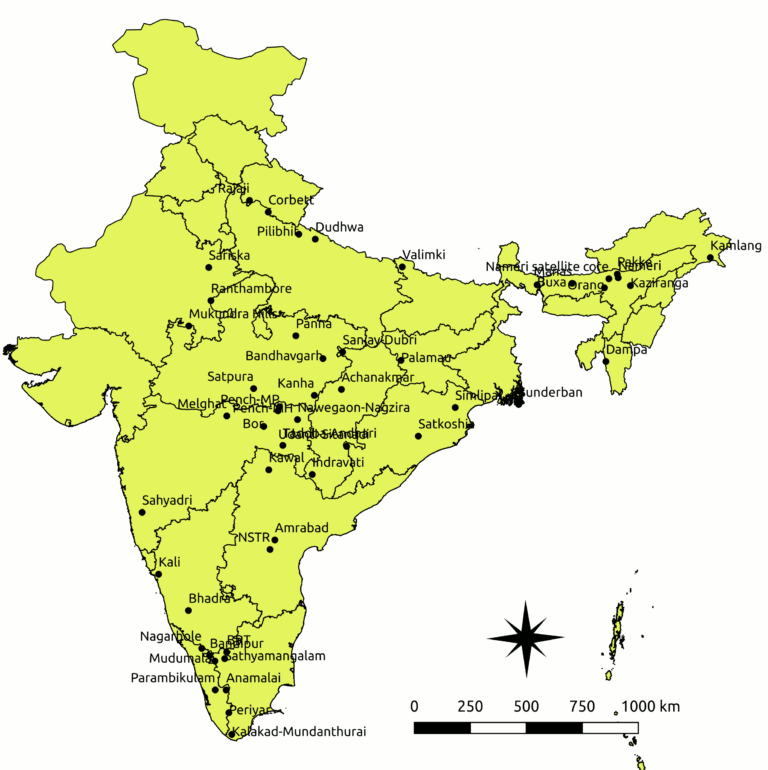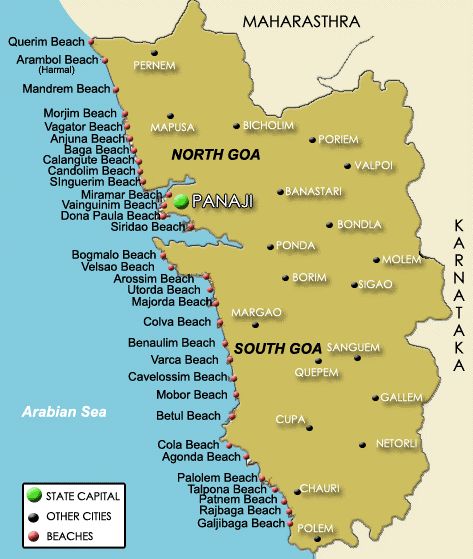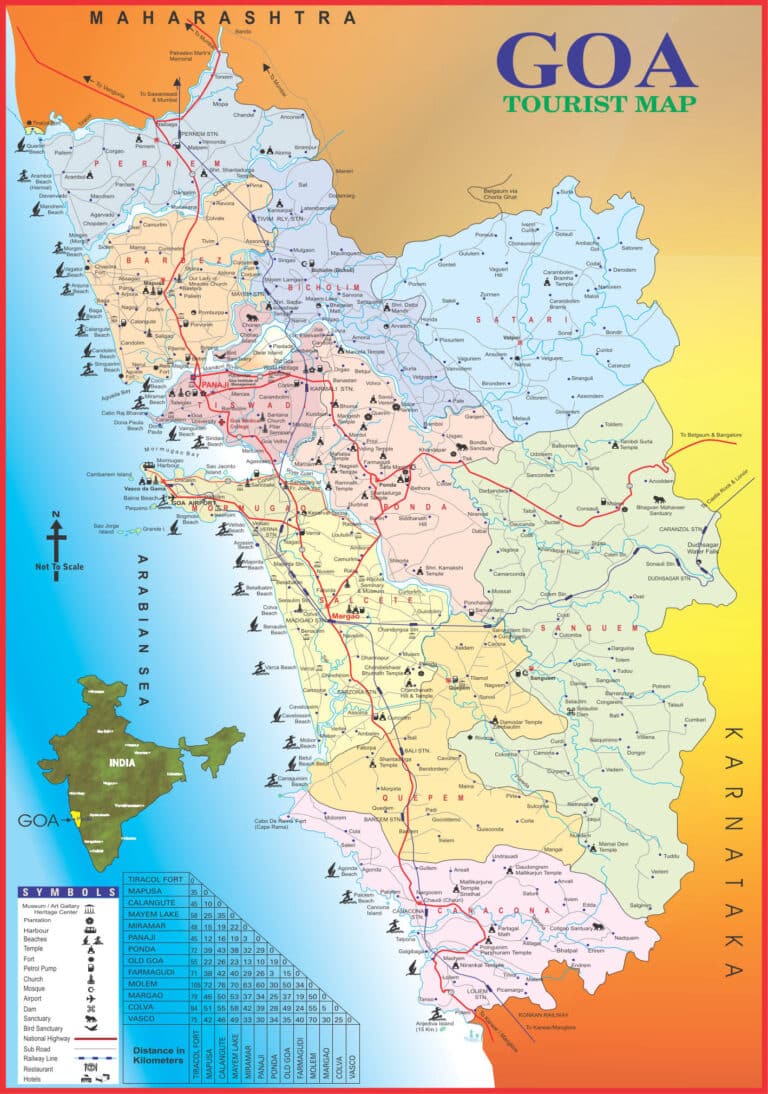India is known for its rich cultural heritage and history and diverse geography, including the Himalayan mountain range, vast deserts, tropical forests, and miles of coastline. India has a federal parliamentary democratic system of government and is a secular republic. It has a rapidly growing economy, driven by industries such as information technology, pharmaceuticals, and consumer goods. India is also home to many important religious and cultural landmarks, such as the Taj Mahal, the Hindu holy city of Varanasi, and the Sikh Golden Temple
Some Facts
| Official Name | Republic of India |
| Continent | Asia |
| Lat Long of India | 20.5937° N, 78.9629° E |
| Area | 3,287,590 km2 (1,269,346 sq mi) |
| Population | 1.40 billion (2023) |
| Capital of India | New Delhi |
| States and UT | 28 states and 8 Union territories |
| Cities | 350+ |
| Largest City of India | Mumbai |
| Official Languages | Hindi and English |
| Major Religion | Hindu 80.5%, Muslim 13.4%, Christian 2.3%, Sikh 1.9%, other 1.8%, unspecified 0.1% (2001 census) |
| National Day | January 26 (1950 – Republic Day), August 15 (1947 – Independence Day) |
| Form of Government | The federal parliamentary constitutional republic |
| President | Droupadi Murmu |
| Vice President | Jagdeep Dhankhar |
| Prime Minister | Narendra Modi (BJP) |
| Currency | Indian rupee |
| GDP | $3.3 trillion (2022 Est.) |
| Calling Code | +91 |
| Time Zone | IST (UTC+05:30) |
| Internet TLD | .in |
Here are some interesting facts about India:
- India is the seventh-largest country in the world by land area and the second-most populous country with over 1.4 billion people.
- India is home to a rich cultural heritage, with more than 2,000 ethnic groups and 1,600 languages spoken.
- Hinduism is the largest religion in India, followed by Islam, Christianity, Buddhism, and Sikhism.
- India is the birthplace of four major religions: Hinduism, Buddhism, Jainism, and Sikhism.
- India was one of the earliest centers of civilization, with evidence of human habitation dating back to the Stone Age.
- India was ruled by several powerful empires throughout its history, including the Maurya, Gupta, Mughal, and British Empires.
- India gained independence from British rule in 1947 and adopted a parliamentary democratic system of government.
- India is the world’s largest producer of milk and is also one of the largest producers of spices, cotton, and tea.
- India has a diverse and rapidly growing economy, with a strong service sector and a growing manufacturing sector.
- India has made great strides in science and technology, with its successful space program, and is home to several world-class scientific institutions.
States and Union Territories of India
States of India
| State | Vehicle code | Zone | Capital | Population | Additional official languages |
|---|---|---|---|---|---|
| Andhra Pradesh | AP | Southern | Amaravati | 49,506,799 | - |
| Arunachal Pradesh | AR | North-Eastern | Itanagar | 1,383,727 | - |
| Assam | AS | North-Eastern | Dispur | 31,205,576 | Bengali, Bodo |
| Bihar | BR | Eastern | Patna | 104,099,452 | Urdu |
| Chhattisgarh | CG | Central | Nava Raipur | 25,545,198 | Chhattisgarhi |
| Goa | GA | Western | Panaji | 1,458,545 | Marathi |
| Gujarat | GJ | Western | Gandhinagar | 60,439,692 | - |
| Haryana | HR | Northern | Chandigarh | 25,351,462 | Punjabi |
| Himachal Pradesh | HP | Northern | Shimla (Summer), Dharamshala (Winter) | 6,864,602 | Sanskrit |
| Jharkhand | JH | Eastern | Ranchi | 32,988,134 | Santali, Urdu |
| Karnataka | KA | Southern | Bengaluru | 61,095,297 | - |
| Kerala | KL | Southern | Thiruvananthapuram | 33,406,061 | - |
| Madhya Pradesh | MP | Central | Bhopal | 72,626,809 | - |
| Maharashtra | MH | Western | Mumbai (Summer), Nagpur (Winter) | 112,374,333 | - |
| Manipur | MN | North-Eastern | Imphal | 2,855,794 | English |
| Meghalaya | ML | North-Eastern | Shillong | 2,966,889 | Khasi |
| Mizoram | MZ | North-Eastern | Aizawl | 1,097,206 | - |
| Nagaland | NL | North-Eastern | Kohima | 1,978,502 | - |
| Odisha | OD | Eastern | Bhubaneswar | 41,974,218 | - |
| Punjab | PB | Northern | Chandigarh | 27,743,338 | - |
| Rajasthan | RJ | Northern | Jaipur | 68,548,437 | English |
| Sikkim | SK | North-Eastern | Gangtok | 610,577 | Bhutia, Gurung, Lepcha, Limbu, Manggar, Mukhia, Newari, Rai, Sherpa, Tamang |
| Tamil Nadu | TN | Southern | Chennai | 72,147,030 | English |
| Telangana | TS | Southern | Hyderabad | 35,193,978 | Urdu |
| Tripura | TR | North-Eastern | Agartala | 3,673,917 | - |
| Uttar Pradesh | UP | Central | Lucknow | 199,812,341 | Urdu |
| Uttarakhand | UK | Central | Gairsain (Summer), Dehradun (Winter) | 10,086,292 | Sanskrit |
| West Bengal | WB | Eastern | Kolkata | 91,276,115 | Hindi, Odia, Punjabi, Santali, Urdu |
Union Territories of India
| Union territory | Vehicle code | Zone | Capital | UT established | Population |
|---|---|---|---|---|---|
| Andaman and Nicobar Islands | AN | Southern | Port Blair | 1 November 1956 | 380,581 |
| Chandigarh | CH | Northern | Chandigarh | 1 November 1966 | 1,055,450 |
| Dadra and Nagar Haveli and Daman and Diu | DD | Western | Daman | 26 January 2020 | 586,956 |
| Delhi | DL | Northern | New Delhi | 1 November 1956 | 16,787,941 |
| Jammu and Kashmir | JK | Northern | Srinagar (Summer), Jammu (Winter) | 31 October 2019 | 12,258,433 |
| Ladakh | LA | Northern | Leh (Summer), Kargil (Winter) | 31 October 2019 | 290,492 |
| Lakshadweep | LD | Southern | Kavaratti | 1 November 1956 | 64,473 |
| Puducherry | PY | Southern | Pondicherry | 16 August 1962 | 1,247,953 |
Top 10 Largest state in India by Population(2022)
| State | Population | Area | Population Density |
| Uttar Pradesh | 238,300,000 | 240,928 km2 | 989/km2 |
| Maharashta | 124,904,071 | 307,713 km2 | 405/km2 |
| Bihar | 129,010,000 | 94,163 km2 | 1370/km2 |
| West Bengal | 97,694,960 | 88,752 km2 | 1100/km2 |
| Madhya Pradesh | 86,590,000 | 308,245 km2 | 280/km2 |
| Tamil Nadu | 72,147,030 | 130,058 km2 | 555/km2 |
| Rajasthan | 78,230,816 | 342,239 km2 | 228/km2 |
| Karnataka | 61,095,297 | 191,791 km2 | 319/km2 |
| Gujarat | 63,907,200 | 196,024 km2 | 326/km2 |
| Andhra Pradesh | 93,820,000 | 162,968 km2 | 575/km2 |
Disclaimer:- This data may vary (The last updated Census data was in 2011 )
Here are some interesting data about india
-
Top 10 Largest State in India By Area
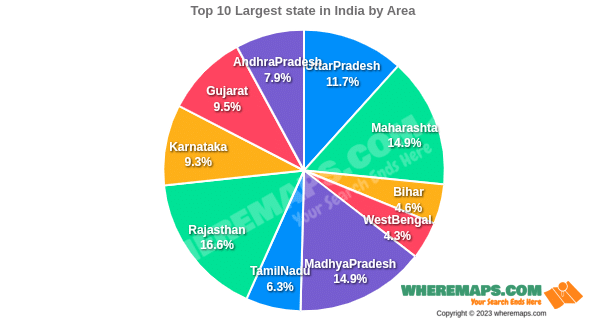
-
Top 10 Largest State in India By Population Density
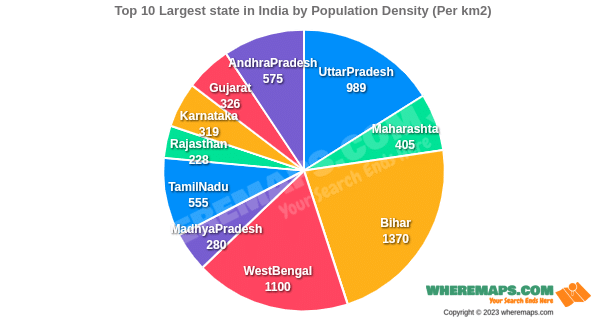
Here are some of the most popular monuments in India:
- Taj Mahal, Agra, Uttar Pradesh
- Qutub Minar, Delhi
- Red Fort, Delhi
- India Gate, Delhi
- Lotus Temple, Delhi
- Humayun’s Tomb, Delhi
- Ajanta & Ellora Caves, Maharashtra
- Sun Temple, Konark, Odisha
- Meenakshi Temple, Madurai, Tamil Nadu
- Hampi, Karnataka.
History
India has a rich and diverse history, with evidence of human civilization dating back to at least the Indus Valley Civilization that existed around 3300 BCE. Over the centuries, India was ruled by various dynasties and empires, including the Maurya Empire, Gupta Empire, Mughal Empire, and British Raj.
Throughout its history, India has been a melting pot of different cultures and civilizations, which has resulted in a rich cultural heritage that is evident in its architecture, literature, music, dance, and art. India is also known for its spiritual and philosophical traditions, including Hinduism, Buddhism, Jainism, and Sikhism.
India played a key role in shaping world history, serving as a hub of trade and commerce and spreading its cultural and religious traditions to other parts of the world. India was also a leader in science and technology, with ancient Indian scholars making important contributions to mathematics, astronomy, and medicine.
In 1947, India gained independence from British rule and became a democratic republic. Today, India is the world’s largest democracy and one of the fastest-growing economies, with a diverse population of over 1.3 billion people.

